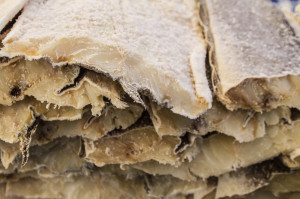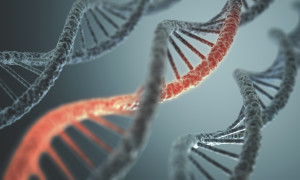From dried cod to tissue sample preservation
Could human tissue samples be dried for storage, instead of being frozen? Researchers are looking at the salt cod industry for a potential tissue sample drying technology that could save money without sacrificing tissue quality.
Preserving biological samples is always a challenge. One new method combines rapid freezing with an old method that is currently used in Norway to dry salt cod.

The type of heat pump used was originally developed as a fuel-efficient way to dry fish. Photo: Thinkstock
“There’s plenty of reason to think that we can preserve biological material without freezing it,” says Trygve Magne Eikevik.
Eikevik is a professor at the Department of Energy and Process Engineering at NTNU, and has years of experience with different methods of preserving biological material. His latest experiments are in collaboration with Professor Jostein Halgunset and Haakon Skogseth, a researcher from the Regional Research Biobank (RFB) at St. Olavs Hospital in Trondheim.
Down to minus 193 degrees
Tissue samples today are either preserved in formalin, at temperatures between – 80 and – 90 degrees Celsius, or in liquid nitrogen, at – 193 Celsius.

Tissue samples are currently preserved in formalin and at temperatures of minus 80 til 90 degrees, or can be stored in liquid nitrogen at l minus 193 degrees. Photo: Thinkstock
The formalin method works well for preserving proteins, and therefore for learning about cell composition. But rapid freezing is much better for saving the delicate material in cells that carries information, such as RNA.
For biobank material such as samples of cancerous tissue, rapid freezing and storage at extremely low temperatures is most commonly used, but very expensive. This method also requires a lot of energy, and the samples have to be monitored constantly.
Drying samples that today are frozen could mean saving a lot of money. Norwegian researchers are thus interested in pursuing the idea, specifically using technology that has become standard in the process of making salt cod.
“Maybe we will be able to store samples at + 4 degrees, or – 20 degrees instead,” says Eikevik.
This means that that samples could be stored in ordinary refrigerators or freezers.
“A method that would allow samples to be dried is therefore of great interest to areas of the world with limited economic resources,” says Halgunset, who is head of RFB.
- See also: The Future Factory
How they did it
The researchers took samples from the lungs, heart, liver and kidneys from lab animals. They then froze these rapidly in liquid nitrogen.
The frozen material was dried at + 5 and – 10 degrees in a heat pump drier at atmospheric pressure, which is a variation of the method used to dry salt cod.
The type of heat pump used was originally developed in the 1970s, during the oil crisis. It was initially developed as a fuel-efficient way to dry fish, but it has since become an industry standard. Naturally, the heat pumps have changed some since then, but the principle is the same.
Drying things at low temperatures allows water to sublimate, which means that it goes directly from a solid to gaseous state, without actually melting. You can see the same thing happen if you dry your clothes outside on a cold winter day.
Preserves quality
The researchers recently published their promising method in the academic journal Drying Technology.

The preliminary results show that a drying temperature of about 0 degrees C is best. Photo: Thinkstock
The quality of the RNA, which is similar to DNA, was measured immediately after freezing, and again after five months. This was done by examining the fragmentation of the molecules. The different types of samples were also tested using optical and electron microscopes, to see how well tissue and cell structures were preserved.
Preliminary results show that drying at temperatures of about 0 degrees is best for preserving RNA, with about the same amount of decomposition of molecules in samples that were dried compared to samples that were stored conventionally. This was true for all five types of tissue that were tested. Cell structures were mostly preserved, although some fine details in the cells seemed to have been affected by this method.
Researchers say the method is both promising and cost-effective, although they will conduct more research on drying methods and conditions, as well as on costs.





